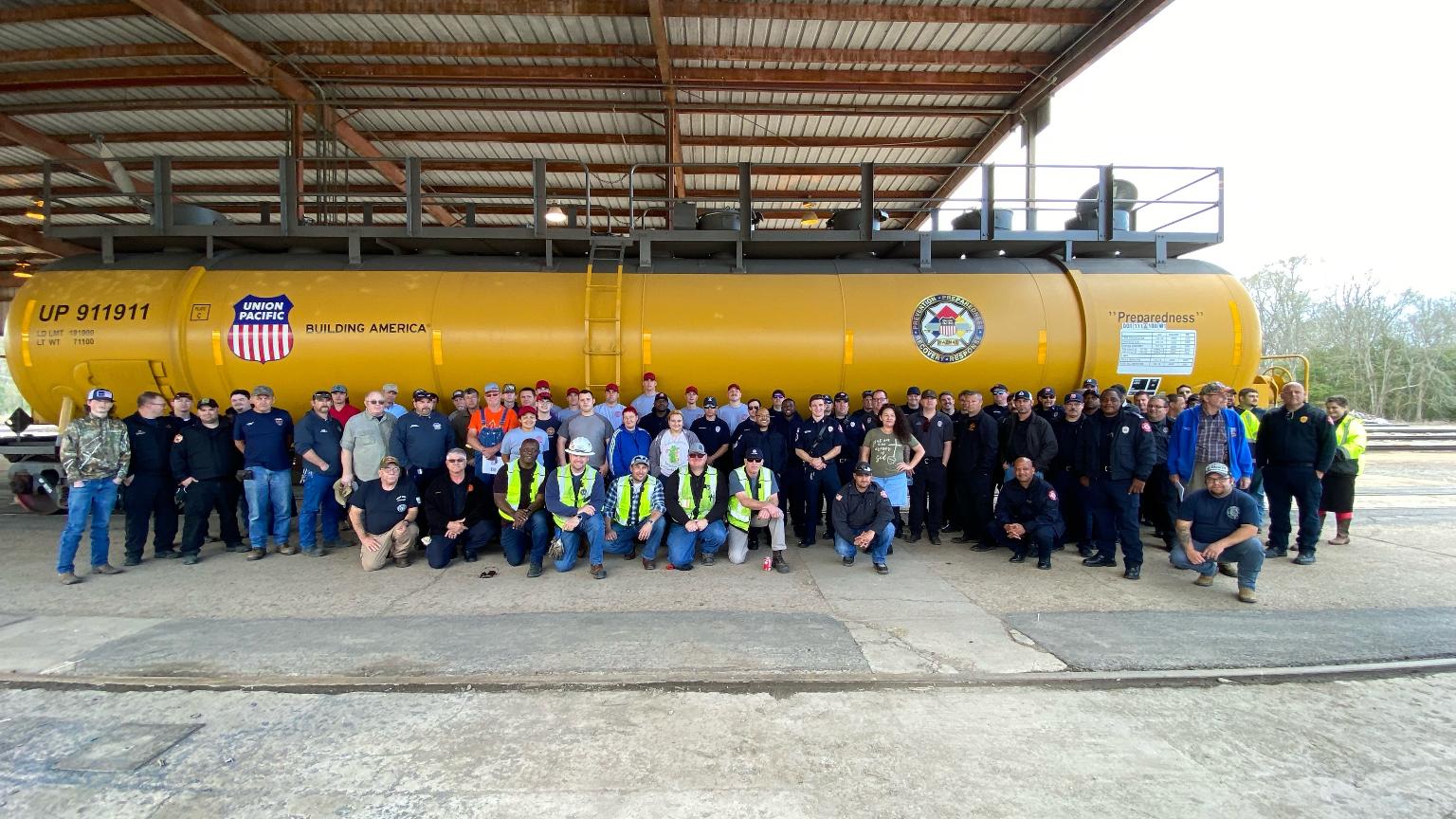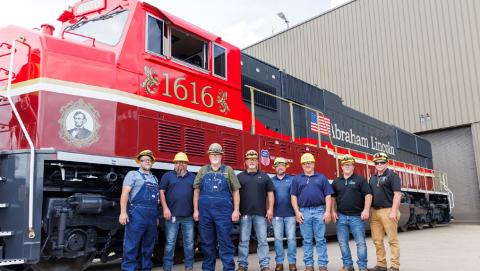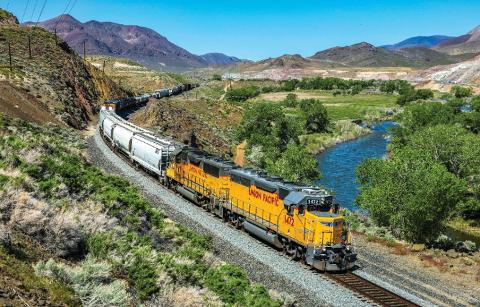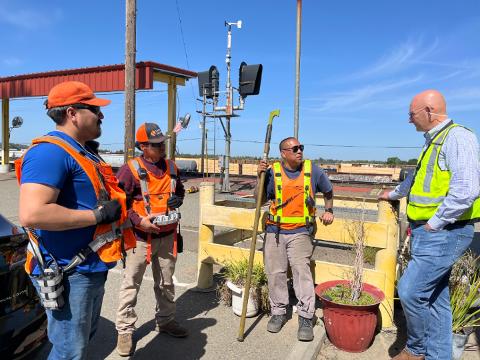The rail accident that occurred Feb. 3 in East Palestine, Ohio, has generated significant interest, curiosity and concern about hazardous materials being transported by rail. Our company and all carriers and producers of hazardous materials are reflecting on how well they’re prepared to respond if a similar situation occurs.
Hazardous chemicals play a part in our everyday life. They are used to produce a variety of necessities we take for granted, including fuels, cleaners, plastics, medications, and pesticides. They are even necessary to ensure we have access to safe drinking water. Federal law requires common carriers, like Union Pacific, to transport hazardous materials, and railroads haul about 20% of the chemicals used in the United States because railroads are the safest way to transport them.
While the Ohio incident shines a bright spotlight on the potential risks associated with hazmat transportation, 99.9% of all hazmat shipments by rail reach their destination without incident. Since 2012, the hazmat accident rate has declined 55%, and over the past 10 years, less than 1% of all train accidents have resulted in a hazmat release.
A significant part of that safety record is our continual investment in infrastructure. The American Society of Civil Engineers (ASCE) gave rail its highest grade in its infrastructure report card, in part because of $20 billion in annual private investments in maintaining and improving the rail network.
Unfortunately, those statistics don’t matter if a catastrophic incident happens in your hometown. I, along with more than 32,000 Union Pacific teammates, share the same goal of delivering every tank car safely, while at the same time being prepared to respond should an incident occur. We approach this task with a four-prong mission: Prevention, Preparedness, Response and Recovery.
Prevention: Teams Perform 5,000 Inspections Annually
Hazardous materials are generally hauled in tank cars. Our regionally based hazardous materials teams perform about 5,000 tank car inspections annually, auditing everything from tank car fittings and car markings to safety appliances. They also work alongside our contractors, our customers, and government regulators to inspect, report and remedy findings.
Our vigilance goes well beyond our hazmat team. All Union Pacific employees are trained regarding hazardous materials safety. Our train crews know, understand and carry proper instructions when operating a train carrying hazardous materials. If our inspections identify a shipper with recurring issues, one of our hazmat team members provides on-site training so the shipper knows and understands the importance of best practices for handling hazardous materials shipments.
Preparedness: Drills Ensure Teams Follow Plan
We developed a Hazardous Materials Emergency Response Plan (HMERP) to prepare for and respond to an emergency. Each Union Pacific operating division performs an unannounced annual drill to verify that plan is in place and followed by all employees.
Union Pacific is a charter member of TRANSCAER® – a voluntary national outreach effort focused on helping communities prepare for and respond to a possible hazardous materials transportation incident. Union Pacific has won the TRANSCAER National Achievement Award annually since 2007.
Subscribe to Inside Track
We also work with community emergency response teams to implement and share best practices and jointly educate team members. We provide free preparedness training to fire departments and first responders, including hands-on activities using real-world railroad scenarios as well as large-scale training exercises with TRANSCAER partners.
Response: 24-hour, 365-day-a-year Emergency Dispatch
Our response process follows the Incident Command structure and protocol, which requires analyzing the problem, planning the response, implementing the plan, and evaluating and adjusting the response as necessary. Our Response Management Communication Center (RMCC) is a 24-hour, 365-days-a-year emergency response center where dispatchers manage calls from employees, the public, law enforcement, and others across our 32,000-mile network. As the first call for any safety concern, the RMCC notifies local, state and federal agencies and communicates with first responders throughout an incident.
In addition to our own world-class response teams, we have a wide network of highly vetted emergency response contractors, most qualified with firefighting or U.S. Coast Guard Oil Spill Response Organization (OSRO) certifications. To supplement the response, air monitoring contractors quickly provide real-time data to public responders. Additionally, we can deploy subject matter experts in toxicology, industrial hygiene, medicine, nursing and environmental protection. Response equipment in the form of firefighting trailers, foam caches, air monitoring equipment and specialty tools ensure resources are readily available.
The heart of every critical incident response is frequent and transparent communications with the impacted community. Our crisis plan includes having a team on the ground to coordinate information between all parties and making sure questions are timely addressed.
Recovery: Safe Handling and Remediation
If a tank car is damaged and cannot travel safely on rail, the contents must be transferred to an intact car. Union Pacific is the only railroad that owns and operates the equipment necessary to transfer liquid or compressed gas. Once a tank car is free of contents, the damaged car is cleaned and purged so it can be safely repaired or dismantled. Once all hazardous materials have been removed from the site, we transition the project for remediation and closure with regulatory agencies.
Ever Vigilant
Recently, core members of management and our entire leadership team engaged in a day-long exercise whose scenario reproduced a critical incident not unlike the events in East Palestine. Efforts like these test our ability to react quickly and decisively to extreme situations that could impact the communities we serve and where we live. Being prepared with the right people, the right plan, and the right resources will help Union Pacific safely navigate through any crisis scenario we may face.
This is part one of a series of Insights essays focused on rail transportation safety at Union Pacific. The next article will focus on derailment prevention efforts.






